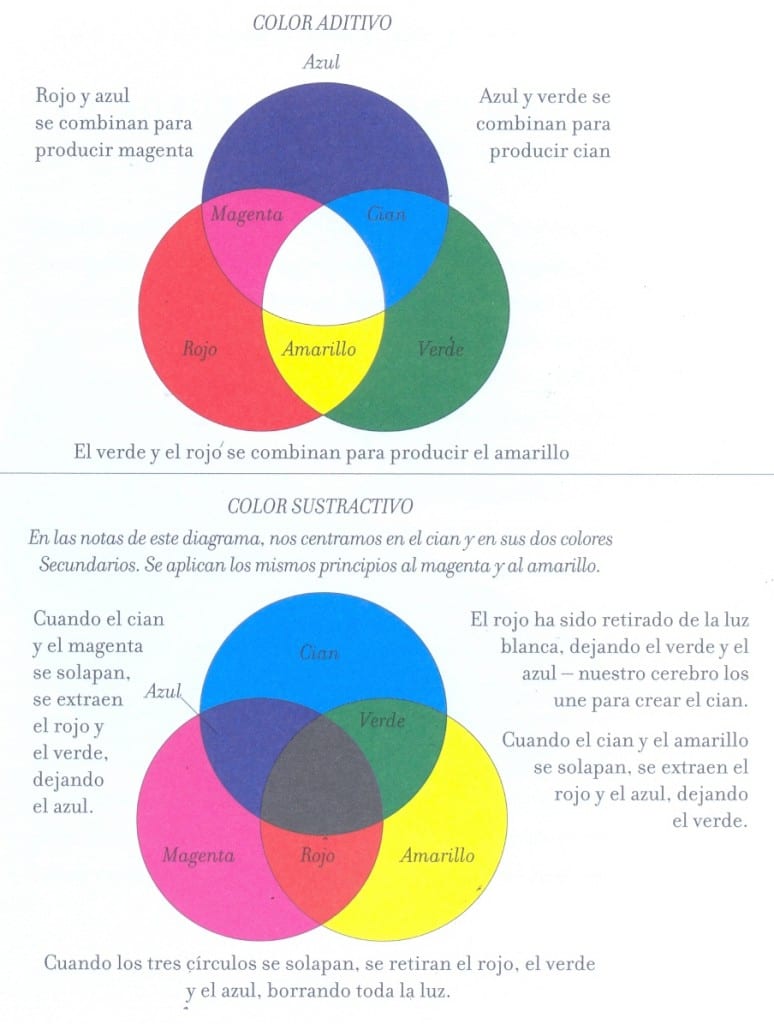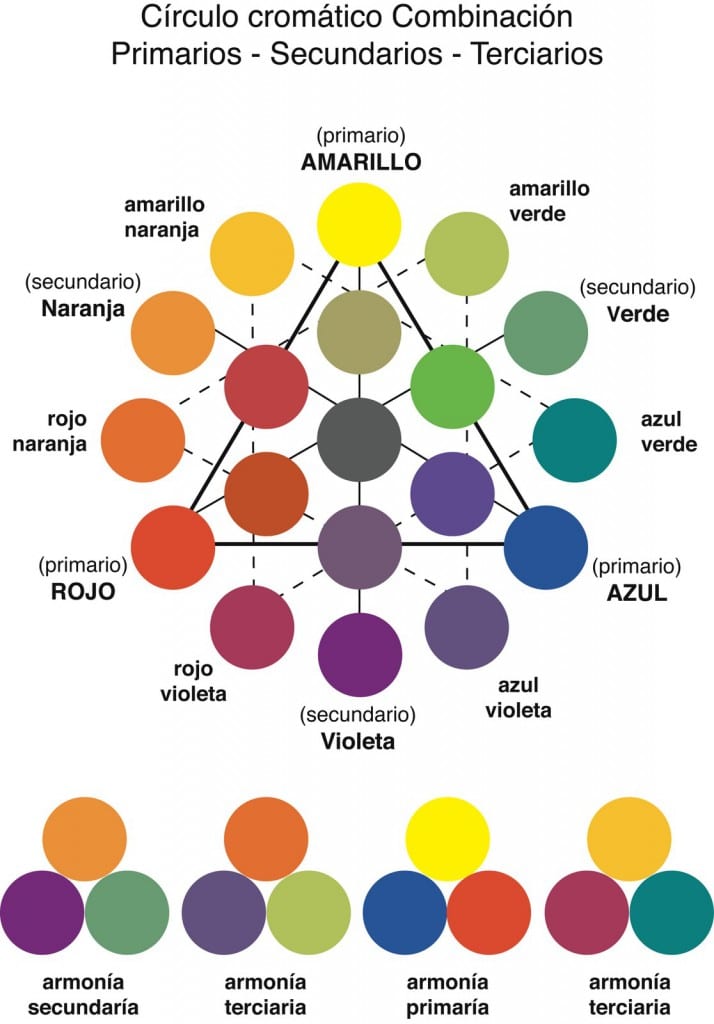Any designer self-respecting must have some basic concepts of color theory.
As a basis you have to know how to differentiate between color spaces RGB and CMYK, since it is the only way to understand the work that we will have to carry out.
Monitors, digital cameras, scanners, and printers work with RGB, while printers are based on CMYK.
RGB
They are the initials of the additive colors in English (R = red, G = green, B = blue), and they are the light colors.
The sum of the three colors, in the same proportion, forms the color light white. And the combinations of red, green and yellow make up the different color ranges.
CMYK
They are the initials of the subtractive colors (C = cyan, M = magenta, Y =yellow, K = black), that is, of pigment colors. The sum of the first three, called primary colors, forms the black color, and its combinations the different shades depending on the proportions.
If we look at the chromatic circle we can see the different colors that can be obtained with the combinations of the primary colors. The colors facing each other in the circle are called complementary colors and their combinations can help us to create a good design with great color since they are the most contrasted with each other, although you have to be careful as they work in a very peculiar way.
For example yellow is the complementary color of violet.
With this base we must know that if we are going to create a type of file that is going to be displayed on a monitor, we must do a RGB, while if it is a document that will later go to press such as a catalog or a book, we will work in a color space CMYK.
Images: tocomderautilybonito, workshopjuanherrera

